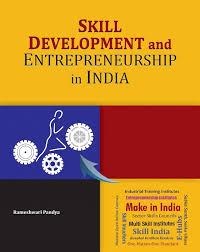Exploring the Impact of Skill India on Youth Employment

Introduction
In today’s competitive job market, acquiring the right skills has become essential for youth to thrive. The Skill India initiative, launched by the Government of India in 2015, aims to equip the youth with necessary skills and promote entrepreneurship. This program is particularly significant as India has one of the youngest populations in the world, with over 600 million people under the age of 25. By focusing on skill development, Skill India is not only enhancing employability but also driving economic growth.
Objectives and Implementation
The primary objective of the Skill India initiative is to train more than 400 million individuals by 2022 across various sectors. The program encompasses diverse skill development programs that cater to different demographics, including women, rural youth, and differently-abled individuals. The initiative involves collaborations with various stakeholders such as state governments, industries, and educational institutions.
Skill India operates through several key programs, including the Pradhan Mantri Kaushal Vikas Yojana (PMKVY), which focuses on providing skill training to youth, and the National Skill Development Mission, which aims to ensure a unified, integrated approach towards skill development. Over the years, various courses have been introduced in sectors like manufacturing, construction, hospitality, and healthcare, reflecting current and emerging market trends.
Recent Developments
In recent months, the Skill India initiative has adapted to the challenges posed by the COVID-19 pandemic. With many sectors facing disruptions, the need for reskilling and upskilling has become critical. The government has expanded online training programs and virtual classrooms to ensure that youth can continue their skill development without facing geographical or logistical barriers.
The Minister of Skill Development and Entrepreneurship, Dharmendra Pradhan, emphasized the initiative’s role in creating job opportunities post-pandemic while enhancing the country’s competitiveness on a global scale. By providing training, the initiative aims to reduce the skill gap and prepare a workforce adept at meeting industry standards.
Conclusion
The Skill India initiative represents a substantial effort towards transforming India’s demographic dividend into a productive force. As we move forward, continued focus on innovative training methodologies and partnerships with the private sector will be crucial for scaling up the impact of Skill India. The ultimate goal is not just to enhance employability but to promote a culture of self-reliance and entrepreneurship among the youth. With the right skills, India’s young population has the potential to contribute significantly to the nation’s economic growth.









